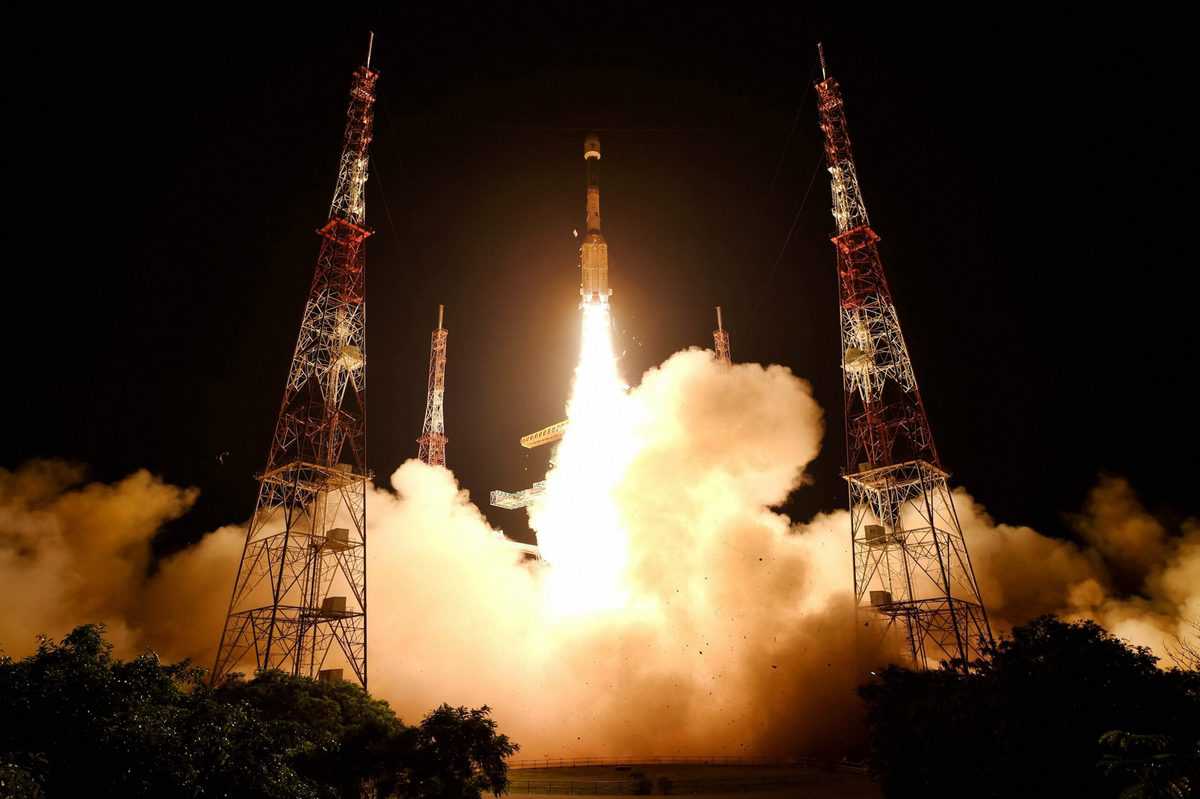
August 12th is the birth anniversary of Vikram Sarabhai, founder of India’s Space Programme. A celebratory launch was the expectation. But, the launch failure of the GISAT-1, geo-mapping satellite came as a huge disappointment for India’s space progress.
The setback was due to the ‘technical problems’ in the cryogenic stage of the rocket launcher- GSLV F10 ( Geosynchronous Satellite Launch Vehicle). It is important that the GSLV succeeds and Indian space scientists master cryogenic technology for the accelerated progress and realisation of the country’s long term space dreams.
Ever since the failure of the Chandrayaan-2 Mission to safely place the Vikram (named after Vikram Sarabhai) Lander on the Moon’s surface in 2019, the pressures on the Indian Space Research Organisation (ISRO) have been increasing. The Pandemic has slowed down the developmental activities too.
The GISAT-1 application and jinx
The country’s first Geo-Imaging Satellite (GISAT-1) has somehow been jinxed from the beginning. It was first slated for launch on March 5, 2020. However, a few hours before the scheduled launch the ISRO announced postponement citing ‘technical glitch’.
In the months that followed the coronavirus turned into a Pandemic. With lockdowns and other challenges, the entire mission got delayed along with other projects of the ISRO. Meanwhile, the satellite was also renamed to EOS-03 or the Earth Observation Satellite-03.
After overcoming the glitches, the ISRO planned to launch it in March-April 2021, but the second wave of COVID19 that swept across many parts of the country brought all launch activity to a grinding halt.
Finally, on Thursday, about seven minutes into its launch at 5.43 a.m. the GSLV -F10 with the GSLV MKII engine encountered problems in its cryogenic engine-the third and last stage of operation. The Mission could not succeed in placing the satellite to the Geosynchronous Orbit. ‘The mission couldn’t be accomplished as intended’, the ISRO statement said.
The main purpose of the GISAT-1/EOS-03, the 2,268 kg satellite was to provide real time images of large areas of interest at frequent intervals. In addition, it was to be used for quick monitoring of natural disasters, episodic events, and any short-term events. These included close observations and warnings of cyclones, cloudbursts, thunderstorms etc
The mission life of the satellite was for 10 years.
GSLV & Cryogenic Technology
The GSLV F10 is the 14th flight of the GSLV and 8th with the indigenously developed cryogenic engine. India’s main workhorse has been the PSLV (Polar Satellite Launch Vehicle), which has the capability to mostly place payloads of up to 1500 kg into low earth orbit. It is amongst the best in class of the launch vehicles in the world.
However, when it comes to GSLV, which places heavier, 2000 kg plus payloads into the Geostationary Orbit, the ISRO seems to be struggling a bit. Since the first launch in 2001, the ISRO has had 4 failures out of the 14. In the case of the use of the indigenously built cryogenic engine, this is the second failure of the 8 attempts.
The GSLV is a three stage/engine rocket. Stage one is fired with solid fuel and the strap-on motors by liquid fuel. Stage two is the liquid fuel and the third is the indigenous cryogenic engine stage.
Cryogenic Technology
Cryogenics is the study of the production and behaviour of materials at extremely low temperatures (below -150 degrees Celsius). The cryogenic stage is the last stage of space launch vehicles which makes use of cryogenics to lift and place the heavier objects in space, especially the geostationary orbit or for further interplanetary missions too.
The Russians had supplied India with 5 cryogenic stage engines during the late 1990s to help India despite the stiff sanctions by the US. The ISRO had simultaneously launched its own indigenous development programme too. In 2007, it announced the successful development of the indigenous cryogenic upper stage. The ISRO has made steady progress in the cryogenic technology with a string of successes in the last decade. It’s record is comparable to the giants like US and Russia.
The Launch Vehicle challenges and looking ahead
India has at present three fully operational rockets — the PSLV and twO GSLV variants – GSLV-Mk II with a carrying capacity of 2.5 tonne and GSLV-MkIII with a payload capacity of four tonne and above.
If the PSLV rocket has emerged as a ‘super performer’ in the last 30 years, the GSLV has turned out to be ISRO’s ‘Naughty Boy’. But, the Naughty Boy has to be tamed and mastered for India to be among the top players in the exciting planetary missions and the multi-billion dollar space business.
The GSLV-Mark III rocket, has emerged as the mainstay for the lunar missions—Chandrayaan. It’s the key to the upcoming ‘Human space flight programme called Gaganyaan. The four launches using this rocket have all been successful. It launched the Chandrayaan-2 lunar mission in 2019, successfully delivering to the lunar orbit even though the Vikram lander was lost during its landing attempt on the lunar surface.
The PSLV, which the ISRO calls it’s ‘workhorse rocket’ has delivered with exceptional success rate. It has just 2 failures in 53 launches with the last 45 plus being continuously successful. The totally liquid stage rocket, PSLV also launched the Chandrayaan-1 in 2008 and the Mars Orbiter Spacecraft in 2013.
The ISRO needs to get down to assessing the reasons for the failure of the EOS-O3. It has to go the root cause and bounce back, says Madhavan Nair, the former Chairman. The failure comes after 16 consecutive launch successes since 2017.
The reason for the urgency is the ambitious and busy schedule the space agency has set for itself. At least a dozen earth observation satellites have to be launched in the near future.
Somasekhar Mulugu, former Associate Editor & Chief of Bureau of The Hindu BusinessLine, is a well-known political, business and science writer and analyst based in Hyderabad

